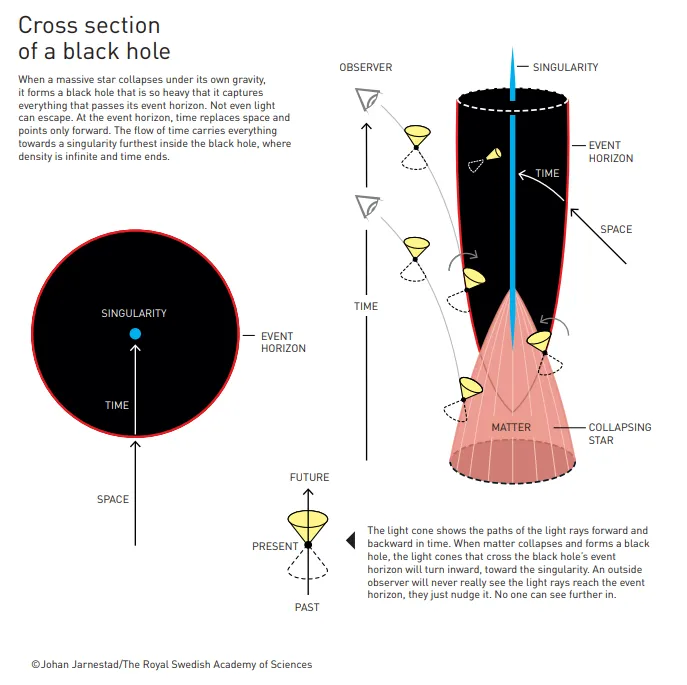This year’s Nobel prize in physics has been awarded to Sir Roger Penrose (1/2), Reinhard Genzel (1/4), and Andrea Ghez (1/4) for their research on Blackhole. Even last year it was in astronomy and cosmology. These are exciting times for astronomy since the last one before that was in 2006.
There is a common trait in astronomy and AI. The work started sometime in the 20th century and was not proved then due to the limitation of the technology. And now when the technologies are developed, we are able to provide pieces of evidence.
The noble prize was awarded last week and that I why I thought it is worth dedicating some time to their work. The winners used the general theory of relativity which talks about how gravity behaves in our universe and how space and time are bent and changed in the space.
Sir Roger Penrose used it to explain and prove the existence of a black hole. The gravity is so strong at the center of the black hole that everything including light particles condenses and forms a massive object, the concept being called the singularity. Penrose proved its existence mathematically back in 1969. But the Nobel prize committee likes the theory observationally or experimentally confirmed before awarding the prize. This is similar to when Einstein provided the theory of gravitational waves in the 1960s but the award was provided in 2017 for the ‘detection’ of gravitational waves. The incredible first-ever image of a supermassive black hole at the center of the M87 galaxy is what I think triggered the Nobel prize committee to think about consideration about the prize at the end of 2019.
#ai #astronomy #black-holes #artificial-intelligence
